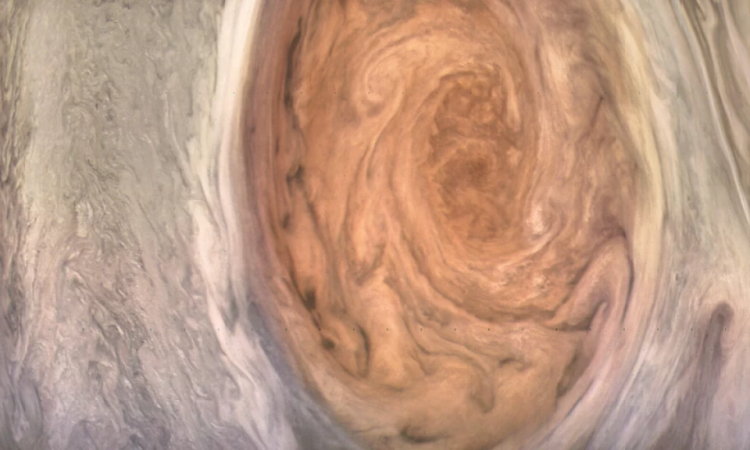
Let’s dive into Jupiter’s Great Red Spot in this incredible high definition video shot by the Juno probe in 2017
It is the largest storm ever observed in our solar system and has raged for nearly 350 years. We are talking about the Great Red Spot of Jupiter, the eye of , one of the most terrible and mysterious places in our entire solar system.
Advertisement
What we know about Jupiter’s Great Red Spot
The first real one color photo of the Great Red Spot is , in 1979. It was taken on February 25 at a distance of about 9 million kilometers from the planet. What we know is that the GMR rotates counterclockwise with a period of 6 Earth days. It measures between 24 and 40 thousand kilometers from west to east and between 12 and 14 thousand kilometers from south to north. In practice it could fit in three times the size of the Earthso imagine how big it is! The diameter of this immense storm has decreasedduring the 20th century and its form also seems to be changing, as we had already anticipated. However, since 2012 astronomers have noticed, perhaps also thanks to the powerful telescopes available to science today, that the spot is shrinking at a faster rate, almost 1000 km per year. In 2010, however, a research group from Hawaii observed that the redder color inside corresponds to a “hot” corewith the dark lines at the edges of the storm representing the sinking gases deep within the planet.
The colour
Although it is not yet known what causes this bright color of the Great Red Spot, many scientists think it is red phosphorus or a sulfur compound. On the other hand, Jupiter has a composition very similar to that of the Sun. In addition to hydrogen and helium, there are a variety of other compounds such as ammonia, methane and water, from which all the various colors that we admire arise.
What’s underneath the famous storm?
One of the questions we ask ourselves most often is: what’s inside Jupiter? Astronomers believe the planet has a solid corerocky, made up of carbon and iron silicates. Around the nucleus there would be a kind of mantle composed of metallic hydrogenwhile all around there would be a vast atmosphere composed of gases that exert very high pressures on the center of the planet. Jupiter’s external atmosphere is characterized, as we were saying, by colored streaks, ranging from cream to brown, in which cyclonic and anticyclonic formations move, including the Great Red Spot. Its very fast rotation generates an intense magnetic fieldwhich extends into the outer solar system many times the radius of Jupiter, disturbing the orbits of other planets but at the same time protecting them from debris that could hit them. Here’s the video in 4K with a nice explanation of how Jupiter’s Great Red Spot is made. Happy viewing!
Cover image credit NASA

